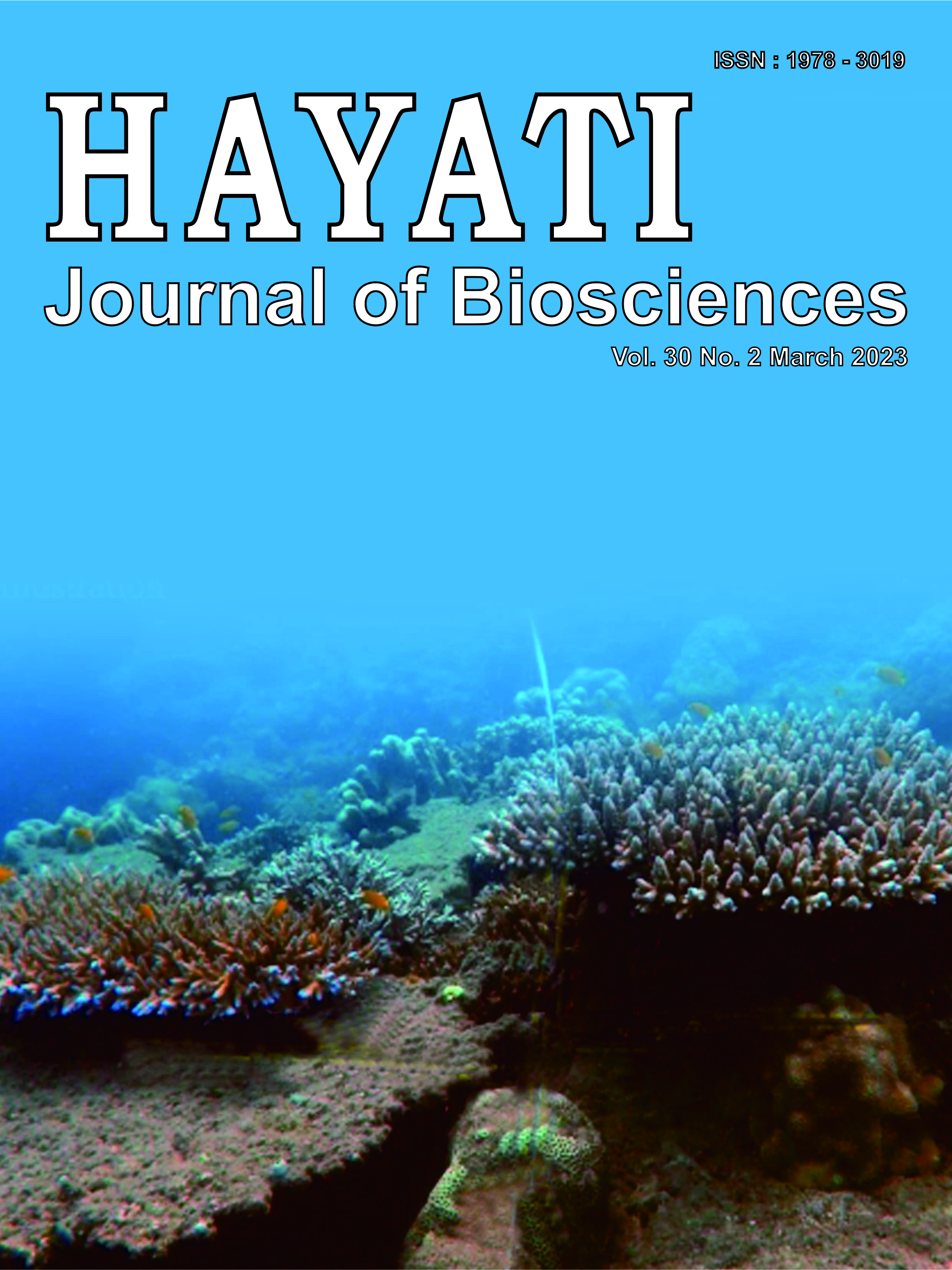Population Estimate of Long-Tailed Macaques (Macaca fascicularis) on Tinjil Island
Abstract
Tinjil Island was established as a Natural Habitat Breeding Facility for long-tailed macaques (Macaca fascicularis) in 1997. Between February 1998 and January 2007, 603 (61 males and 542 females) simian retrovirus (SRV) free long-tailed macaques were introduced to the island on the south coast of West Java and function as a primate resource and conservation program. To date, 3256 progenies have been harvested and used as the animal model. Therefore, it is necessary to survey the current population of the long-tailed macaques to evaluate whether the population is still under the island’s carrying capacity. This research aims to identify the population estimate of long-tailed macaques currently occupying the island. The observation was conducted in July 2021 using line transect sampling starting from 07.00 AM and 01.00 PM. Twelve observations were conducted during the study using CD and ES transects. CD (Chuck Darsono) and ES (Emil Salim) are the two longest trails on the island and represent the names of the people who initiated the captive breeding of Tinjil Island. The estimated group density of the long-tailed macaques on Tinjil Island is 13.46 groups/km2, while the estimated population density is 111.04 individuals/km2. The population estimated on the island is 627.38±23.53 individuals. The number indicates that the population is still under carrying capacity.
Downloads
Copyright (c) 2023 Dyah Perwitasari-Farajallah, Entang Iskandar, Hana Intishar Sawitri, Tommy Langgeng Abimanyu, Vallen Sakti Maulana, Annisa Devi Rachmawati, Indra Purnama, Huda S. Darusman

This work is licensed under a Creative Commons Attribution-NonCommercial 4.0 International License.
HAYATI J Biosci is an open access journal and the article's license is CC-BY-NC. This license lets others distribute, remix, tweak, and build upon author's work, as long as they credit the original creation. Authors retain copyright and grant the journal/publisher non exclusive publishing rights with the work simultaneously licensed under a https://creativecommons.org/


















.png) IPB University
IPB University Department of Biology
Department of Biology The Indonesian Biological Society
The Indonesian Biological Society 

